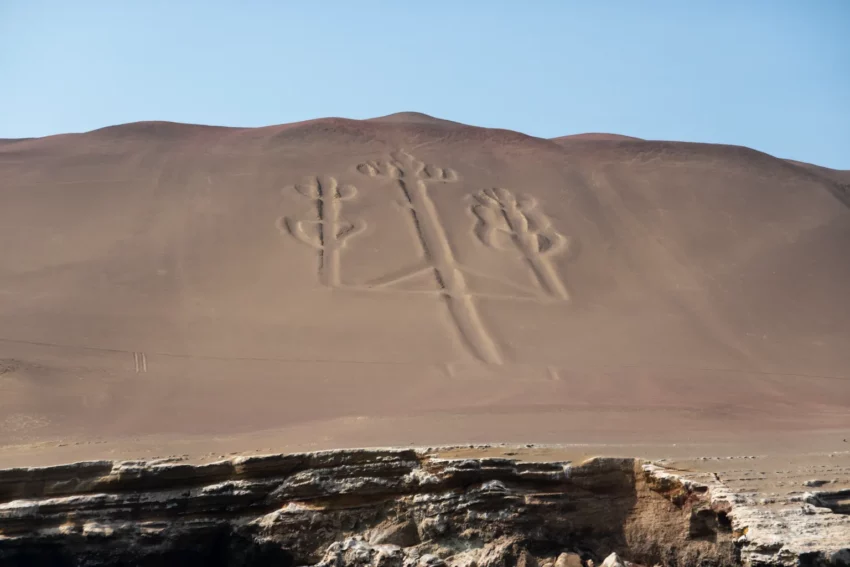The Paracas Candelabra: A Mysterious Marvel
The Paracas Candelabra, also known as the Candelabra of the Andes, is a prehistoric geoglyph located on the northern face of the Paracas Peninsula in Peru. This massive figure, carved two feet into the soil, stands 600 feet tall and can be seen from 12 miles out at sea. Pottery found nearby dates back to around 200 BC, coinciding with the Paracas culture.
Get your dose of History via Email
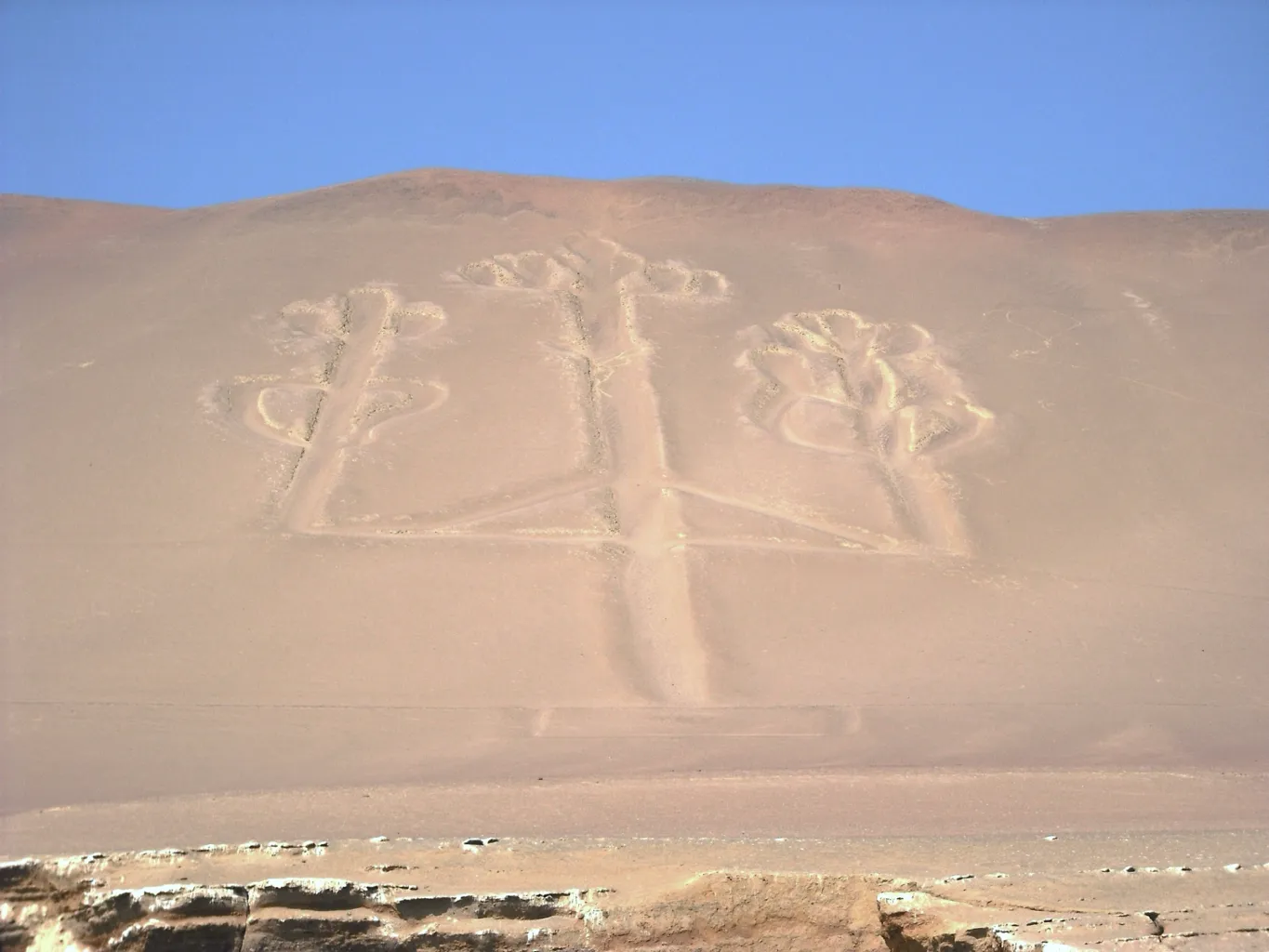
National Heritage Status
In 2016, Peru designated the Paracas Candelabra as a national heritage site. This status carries legal protections, with jail terms ranging from three to six years for anyone who damages archaeological monuments.
Historical Background
Various myths surround the geoglyph’s purpose and origin. Modern archaeologists generally attribute it to the Paracas culture. Some believe it represents a Mesoamerican world tree motif. Despite the exact age being unknown, pottery around the site dates to approximately 200 BC. However, it’s unclear if the Paracas people did in fact construct the geoglyph.
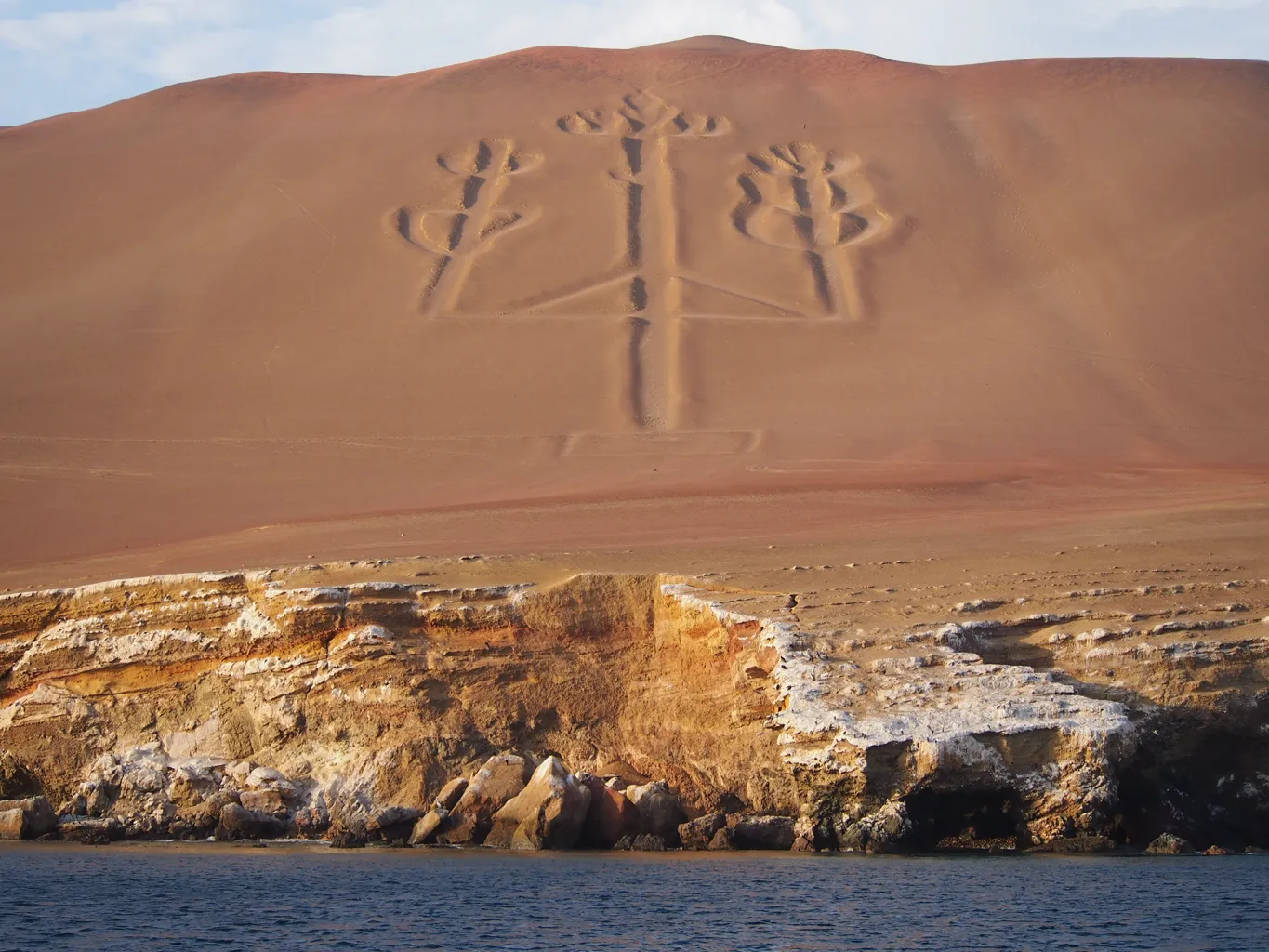
Mythological Connections
The Paracas Candelabra has intriguing mythological significance. In the Ramayana, a Hindu epic, it is mentioned as Ketu, meaning “flag of Ananta.” This description refers to a “three-headed golden flag shining on top of the mountain.” Some interpretations link this to the eastern direction in ancient Hindu texts, aligning with the Candelabra’s location when viewed from the Indian subcontinent.
Artistic and Cultural Significance
The Paracas Candelabra is often compared to the Nazca Lines, another famous geoglyph in Peru. Both are massive designs created in the desert sands, preserving their intricate patterns for centuries. Despite being exposed to harsh weather, the Candelabra remains intact due to a protective layer of crystalline material formed by wind and sea spray.
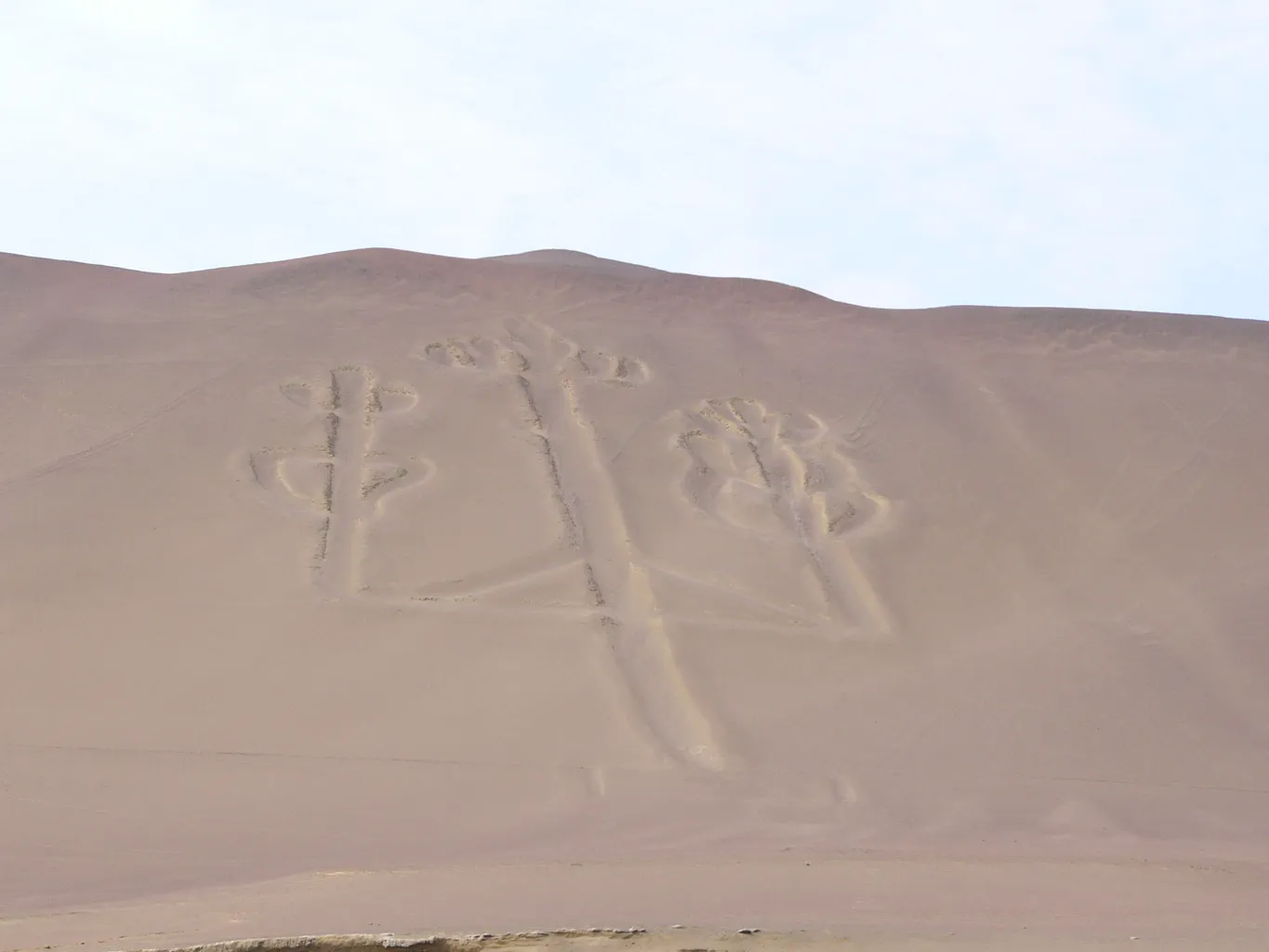
Interpretive Hypotheses
Several theories attempt to explain the geoglyph’s purpose. Some believe it served as a navigational aid for ancient sailors and pirates, guiding them on their voyages. Others speculate it marked hidden treasures left by pirates. However, the precision of the design suggests a more sophisticated origin.
Astronomical Alignment
One theory posits that the Candelabra aligns with the Southern Cross constellation. This constellation, also known as the Navigator’s Cross, helps sailors in the Southern Hemisphere locate the South Pole. Guillermo Illescas, a researcher, identified connections between the geoglyph and the stars of the Centaurus constellation, which give the Candelabra its distinct shape.
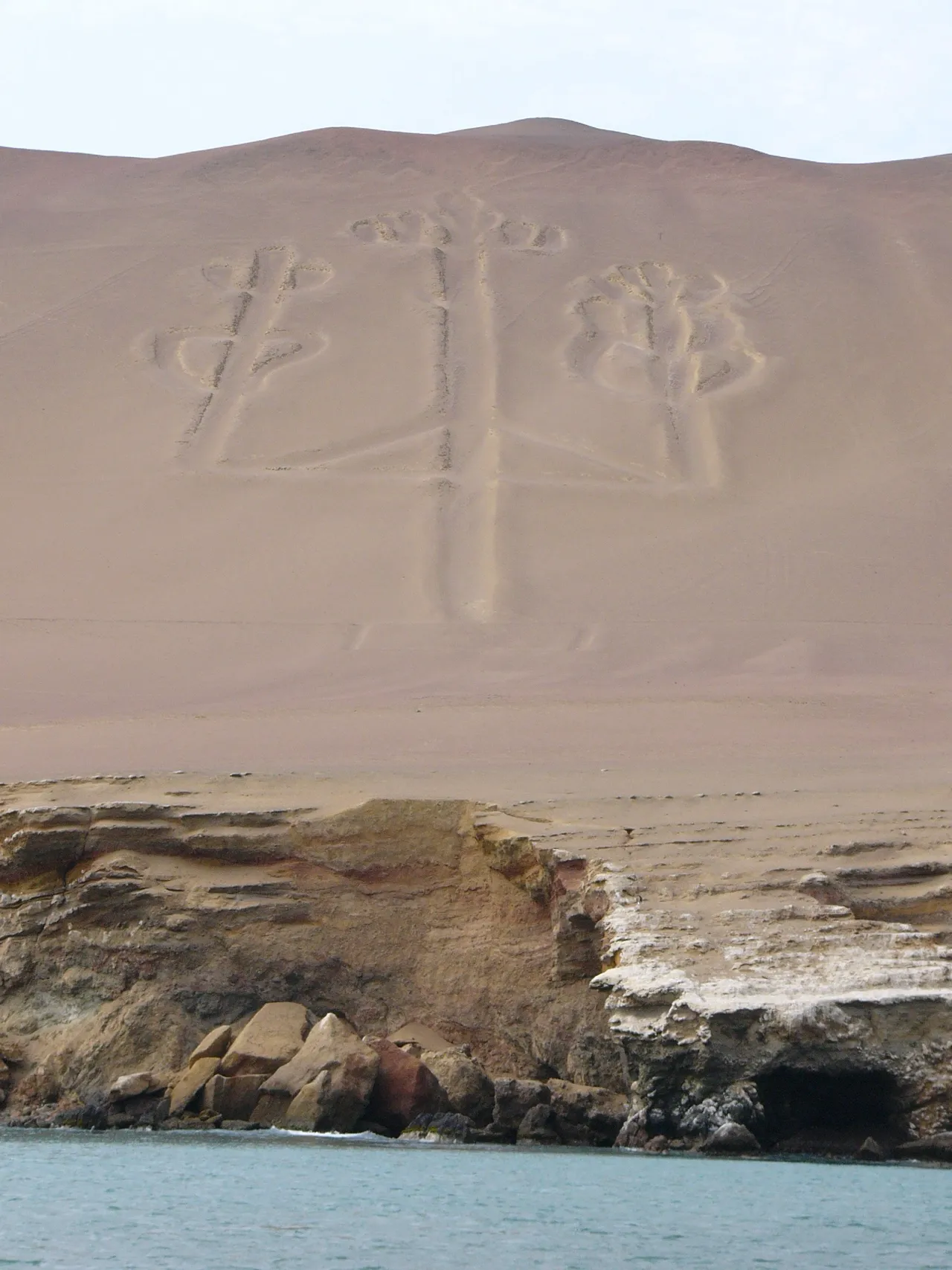
A Symbol for Sailors
The Paracas Candelabra might have served as a landmark for ancient mariners. Its large size and prominent location would make it a useful navigational marker visible from the sea. Some even suggest that it was a symbol of Freemasonry, possibly created by José de San Martín, though this theory conflicts with the Candelabra’s age.
Conclusion
The Paracas Candelabra remains an enigma, captivating scholars and tourists alike. Its origins, purpose, and meaning continue to spark debate and fascination. Whether it was a navigational tool, a symbol of mythological significance, or an astronomical guide, the Candelabra stands as a testament to the ingenuity and mystery of ancient civilizations.
Sources:

